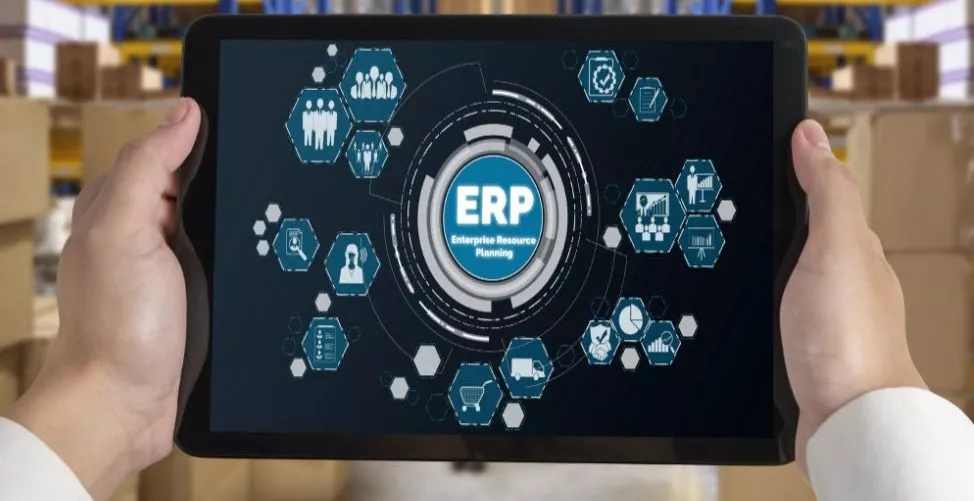Comprehensive Guide to Magento ERP Integration in Singapore
In Singapore’s dynamic eCommerce landscape, where businesses are striving to keep up with rapid growth and technological advancements, Magento ERP integration can be a game-changer. ERP systems consolidate essential business functions such as finance, accounting, and order processing into a unified platform, ensuring a single source of truth for your company’s data.
This guide helps you navigate Magento ERP integration, offering insights to enhance efficiency, reduce errors, and streamline operations. Whether adopting ERP for the first time or modernizing your setup, you’ll find practical advice tailored to the Singaporean market for seamless eCommerce integration.

What is Magento ERP Integration?
Since Magento is not an ERP system, it cannot fulfill all of a business’s needs. Integrating Magento with ERP provides a comprehensive eCommerce solution by incorporating essential processes, modules, and capabilities that Magento alone does not offer.
Magento ERP Integration facilitates the transmission of crucial information such as notifications and updates, which are vital for informed decision-making. It handles various company activities, including supply chain management, knowledge bases, human resources, payroll, and product distribution.
This integration not only boosts corporate productivity but also reduces administrative and operational costs, managing internal processes effectively to enhance revenue.
In Singapore, where the ERP software market is projected to reach US$156.40 million in 2024, effective ERP integration can significantly benefit businesses. By linking data and applications across finance, accounting, customer relationship management, and human resources, it streamlines operations and improves efficiency.
Watch more: Top 10 Magento Agencies in Singapore 2024
Strategies To Consider For Magento ERP Integration In Singapore
Point-to-Point (P2P) Integration
Point-to-Point (P2P) integration involves establishing direct connections between Magento and your ERP system. This straightforward approach of Magento ERP integration is ideal for small to medium-sized businesses in Singapore with relatively simple integration needs.
Key Characteristics and Advantages:
- Simplicity: P2P integrations are easy to set up and maintain. They involve direct connections between Magento and the ERP, allowing for seamless data exchange.
- Cost-Effective: This strategy is often budget-friendly as it reduces the need for additional middleware or complex infrastructure. It’s a practical choice for businesses looking to optimize costs.
- Quick Deployment: P2P integrations can be implemented quickly, making them suitable for businesses in Singapore that need rapid deployment.
Considerations:
- Scalability: P2P integrations may encounter limitations as your business grows. If your integration requirements become more complex, P2P solutions might not scale as effectively as other options.
- Maintenance: Despite their simplicity, P2P integrations require ongoing maintenance to ensure smooth data flow between systems. This includes monitoring for errors and updating the integration as needed.
Enterprise Service Bus (ESB) Integration
Enterprise Service Bus (ESB) is a middleware approach designed to connect multiple systems, making it ideal for businesses in Singapore with complex Magento ERP integration needs. ESB serves as an intermediary layer between Magento and your ERP, facilitating efficient data exchange and transformation.
Key Characteristics and Advantages:
- Complex Integration: ESB is perfect for scenarios involving multiple systems that need to communicate and exchange data. It provides a centralized hub for managing these connections.
- Data Transformation: ESB can handle data transformation tasks, ensuring that data from various sources is compatible and structured correctly for both Magento and the ERP.
- Flexibility: ESB offers flexibility, allowing businesses to adapt to evolving integration needs and incorporate new systems or services as required.
Considerations:
- Cost and Complexity: Implementing an ESB solution can be more expensive and complex compared to Point-to-Point (P2P) integrations. It often requires additional expertise and resources.
- Deployment Time: The deployment of an ESB solution can take longer due to its complexity and the need for extensive configuration.
Integration Platform as a Service (PaaS)
Integration Platform as a Service (PaaS) is a cloud-based solution that facilitates seamless data exchange between Magento and your ERP system. iPaaS platforms offer a centralized environment for managing integrations and data flows.
Key Characteristics and Advantages:
- Scalability: iPaaS is highly scalable, accommodating businesses of various sizes. It supports the easy addition of new applications and services as your business grows.
- Cloud-Based: As a cloud-based solution, iPaaS reduces the need for on-premises infrastructure, making it a cost-effective and accessible option.
- Pre-Built Connectors: Many iPaaS platforms come with pre-built connectors and templates for popular applications and ERPs, simplifying the integration process.
Considerations:
- Data Security: While iPaaS platforms offer strong security, businesses must ensure compliance and data protection, especially when handling sensitive information or financial data.
- Subscription Costs: iPaaS solutions generally involve ongoing subscription fees, which should be considered in your budgeting.
- Vendor Reliance: Using iPaaS means relying on the platform provider. Choosing a reputable and reliable vendor is essential for ensuring service quality and support.
Selecting the right strategy of Magento ERP integration for connecting Magento with your ERP depends on your business’s needs, size, complexity, and budget. Carefully evaluate your integration requirements and future scalability when choosing the best approach.
Watch more: ERP System Development in Singapore: Steps, Costs, Examples
Steps Involved In Implementing Magento ERP Integration in Singapore
Define What Data Must Be Shared Between Systems
For a successful Magento ERP integration, it’s essential to clearly define the data that needs to be shared between your systems. ERPs manage data flows across your business, so effective integration depends on identifying the key data points.
While the specifics can vary based on your business needs, here are some common data types to consider:
- Product Information: Descriptions, prices, categories, and other attributes
- Media Assets: Images and related media
- Inventory Data: Stock levels and product availability
- Order Details: Numbers and statuses
- Tax Information: Applicable tax rates and rules
- Discounts: Coupon codes and promotions
- Invoice Details: Billing and payment information
- Customer Data: Names, emails, addresses, phone numbers, pricing details, billing information, and customer accounts
Tailoring this data to fit your specific needs will help ensure a seamless and effective integration for your Singapore-based business.
Define Source of Truth for Data Elements
After identifying the data that needs to be shared, it’s crucial to establish the source (or sources) of this data.
This process can be complex if you’re dealing with multiple disconnected systems, such as CRM, accounting tools, and warehouse management software. However, if you’re already utilizing an ERP system, this step may be simpler, as most of your data will be centralized within the ERP platform.
Take the time to thoroughly identify and document where each piece of relevant data is stored. This step of the Magento ERP integration process is essential to avoid missing critical information and having to redo the integration. Ensuring clarity on the data sources will help streamline the integration process and improve overall accuracy.
Select the Right Timing
Syncing data between your Magento store and ERP system is essential, but the timing and frequency of these updates are crucial to avoid performance issues. Continuous data exchange can place a significant load on your site, leading to slower load times and a diminished customer experience.
In Singapore, where the eCommerce market surged to US$8.2 billion in 2022 and is projected to hit US$11 billion by 2025, efficient operations are crucial. To keep up with this growth, it’s essential to choose the right intervals for syncing data in Magento ERP integration. For example, product descriptions can be updated weekly, while real-time updates are vital for managing new sales orders and pricing changes effectively.
Here are three methods to sync data between your Magento store and ERP systems, based on your chosen frequency:
- Manual Data Exchange: This traditional approach involves manually exporting data from one system and uploading it to the other. While feasible for syncing information infrequently (e.g., once or twice a week), it is labor-intensive and generally not recommended for businesses with up-to-date systems.
- Semi-Automated via Cron Jobs: Cron jobs can reduce manual work by automating data export and import processes. For example, you could schedule a cron job to export data from Magento at 2 AM daily and import it into your ERP at 3 AM. While this method improves efficiency, it may not be suitable for real-time data synchronization.
- Fully Automated Sync via API Endpoints: This advanced method involves using APIs to automate data exchange between Magento and your ERP system. It allows precise control over data timing, enabling batch updates for less critical information (like product descriptions) and real-time synchronization for crucial data (such as order details). For best practices, refer to Adobe’s documentation.
Choosing the right method and timing for data synchronization ensures smooth operations and a better customer experience in Singapore’s competitive eCommerce landscape.
Conclusion
Integrating an ERP with your Magento store can revolutionize your business. By understanding the benefits, selecting the right ERP, and following best practices, you’ll set yourself up for a seamless and efficient integration. If you lack the in-house expertise, partnering with a Magento agency can assist you in selecting and integrating the right ERP solution.
To ensure a successful and smooth integration tailored to your specific needs, consider partnering with SmartOSC. With our expertise in Magento ERP integration, we can guide you through every step of the process and help you unlock your business’s full potential. Contact us today to start your integration journey and enhance your eCommerce operations!


